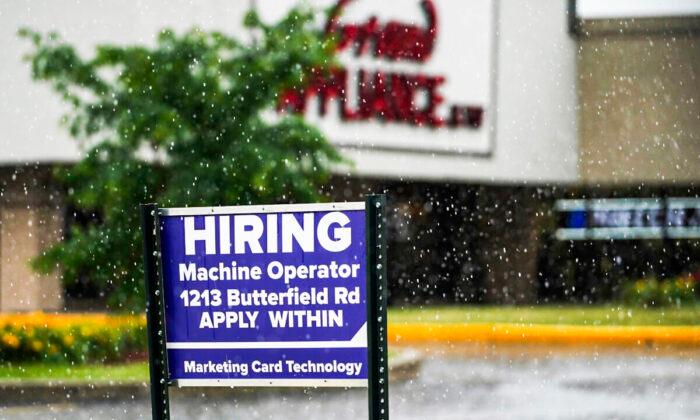U.S. labor output steeply declined in the first quarter of 2022, with its fastest drop in productivity in 75 years, while growth in unit labor costs accelerated, according to a May 5 report from the U.S. Bureau of Labor Statistics
The government report indicated that rising wage pressures would continue to keep inflation elevated for the time being.Nonfarm productivity per hour dropped by 7.5 percent for the first three months of 2022, the worst rate seen in the United States since the third quarter of 1947, shortly after the end of the Second World War.
Analysts had initially expected a 5.4 percent tumble in nonfarm productivity in the first quarter.
Total production output per hour slumped by 2.4 percent in the same quarter.
Productivity rates, which have remained volatile since the start of the pandemic more than two years ago, fell by 0.6 percent from the same period in 2021.
The decline in productivity puts focus on U.S. gross domestic product (GDP) in the first quarter, which showed the economy contracting for the first time since the pandemic began in 2020. GDP shrunk by 1.4 percent, reversing 2021’s growth.
The first quarterly results were poor compared to the revised 6.3 percent spike in labor productivity in the fourth quarter of 2021, which was originally reported at 6.6 percent.
A surge in labor costs followed the results from a recent government report showing American worker compensation hitting its largest increase in over three decades in the first quarter of 2022, amid a persistent labor shortage.
The department’s figures showed that unit labor costs rose by 11.6 percent during the first quarter, following a 1 percent growth pace in the fourth quarter, reflecting a steep drop in productivity and a rise in hourly compensation.
Analysts expected the cost of labor to spike by 9.9 percent compared to the 0.9 percent increase that had been reported for the previous quarter.After growing at a 7.4 percent pace in October through December 2021, the smaller 3.2 percent increase in hourly compensation from January through March 2022 also likely affected labor costs.
Compensation rates for the first three months of 2022 rose 6.5 percent compared to the first quarter of 2021, with unit labor cost rates also shooting up by 7.2 percent from a year ago.However, real hourly compensation, which takes consumer prices into account, dropped 5.5 percent in the first quarter of 2022 after falling by 0.5 percent in the fourth quarter of 2021, largely negating the increases in pay.
Average hours worked increased by 5.5 percent in the first quarter, after rising 2.5 percent in the fourth quarter of 2021.
The end of March 2022 saw job openings at 11.5 million, with 4.5 million workers quitting their workplaces for better job opportunities.
On May 4, the Federal Reserve raised its policy interest rates by 50 basis points, the biggest hike in 22 years, and said it would begin reducing its bond holdings in June to fight worsening inflation rates.Ongoing supply chain logjams, higher energy prices, pandemic lockdowns in China, and the conflict in Ukraine have all contributed to growing inflation.
Reuters contributed to this report.




